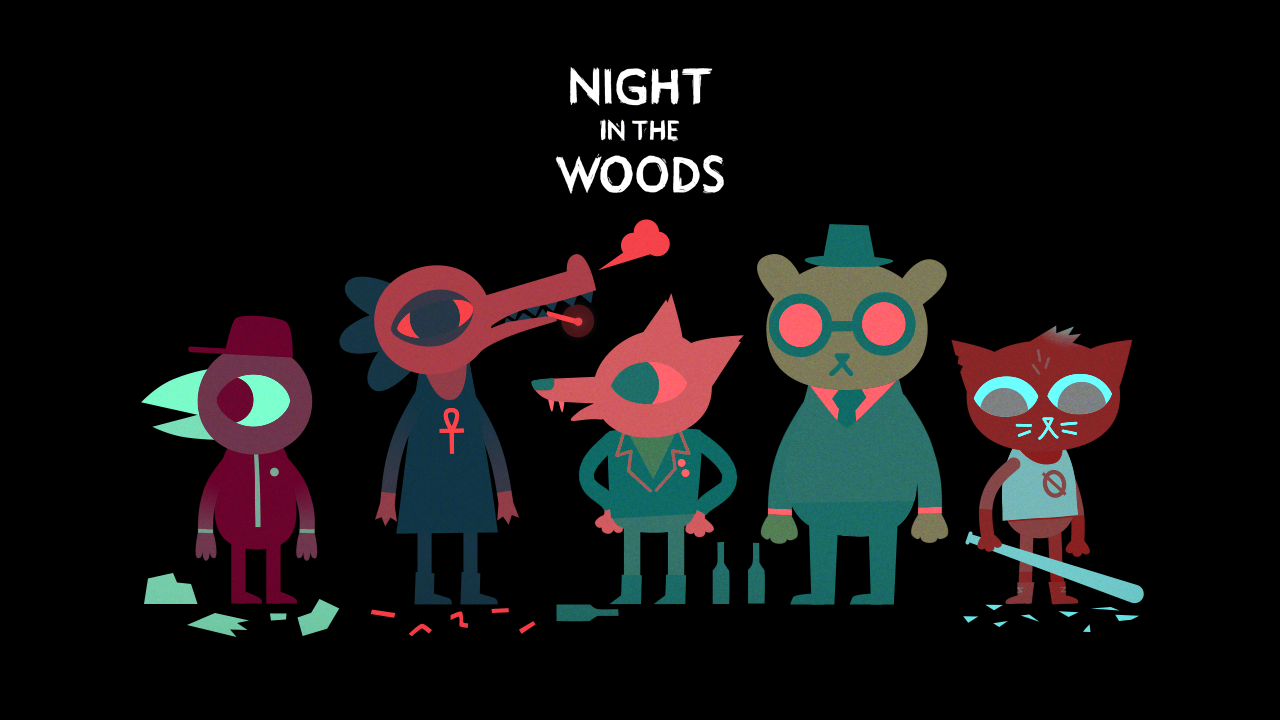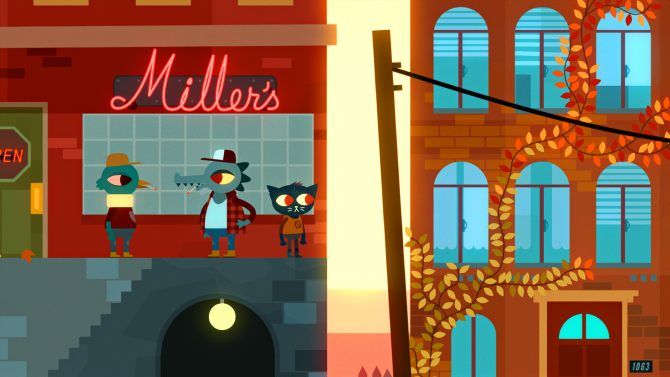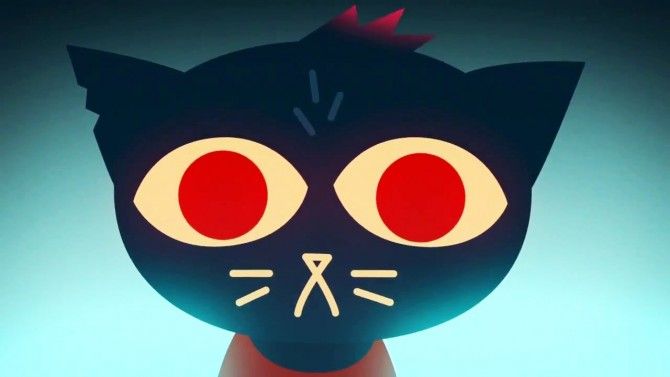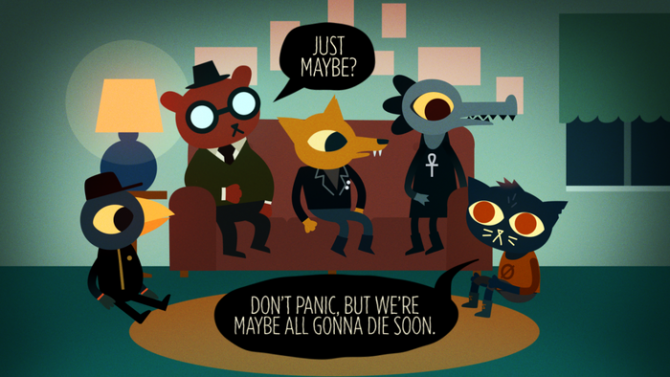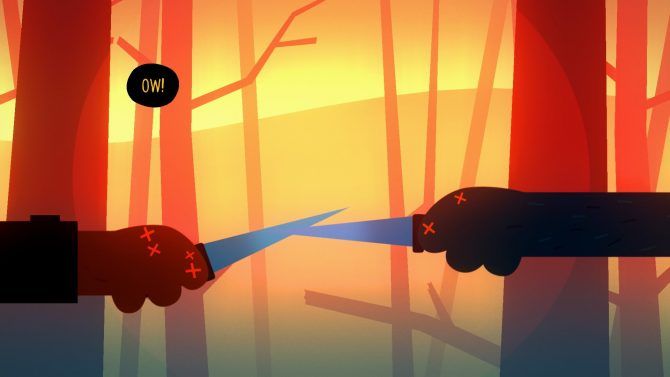Night in the Woods is the type of game that will resonate on vastly different levels depending on who is playing it. It's a game that tugs heavily on small town nostalgia, and explores personal topics such as depression and personal stagnation. It will either tug on your memories and emotions, or will simply not be relatable. However, this doesn't mean your time with the game will be a bad experience if you land in the latter, as the narrative, characters, art design, and atmosphere are all brilliantly crafted, and unlike many games these days: fully-realized.
Night in the Woods tells a specific story, explores specific themes, and conveys a specific and indelible experience. Whether all of it hits home or not will alter how it resonates, but it doesn't change the fact that developer Infinite Fall has created something wonderfully unique and exceptional.
In Night in the Woods you play as Mae, an obstreperous, selfish, melancholy, anthropomorphic cat who, in many ways, is deleterious to those around her. She would be pretty unlikable (purposefully), if she wasn't redeemed by her drollery and occasional childlike pep.
Mae is 20, and she has dropped out of college to return to her rust-belt hometown Possum Springs, a former mining town, nostalgic for its glory years and that perfectly captures and embodies the rural small-town feel. As suggested above, Mae is a troublemaker, with the type of attitude and rap sheet that makes you stick out in a small town where no one forgets who you are.
The game takes place in days, meaning each day begins with you waking up and ends with you going to sleep. There is no timer on days: rather, they progress by completing certain story beats that push the narrative along. With this structure, the game is pretty open-ended on the pace you set. Personally, it took me, the type of gamer who wants to meticulously absorb every piece of content and leave no stone unturned, 20 hours to complete.
Regardless of how many hours you squeeze out of it, what the game's progression structure does is create a routine for the player. Every morning I would hop on Mae's computer to read the AIM-like messages that her friends had left that morning, and which usually referenced something from the previous day, as well as told me where I could find them and what might be on the day's agenda.
After chatting up Mae's mom at her usual kitchen table spot, I would explore Possum Springs via the ground, powerlines, or rooftops. While exploring, there was always a slab of distinct locals to talk to, friends to hit up at their shitty service jobs, and things to interact with. And like small-town living, all of these days felt borderline indistinguishable, but always had fresh content and provided me with more information on the town and its inhabitants, as well as provided good transitional periods between narrative progression points. Almost all of it is optional, as well: however, who you decide to interact with, and which friendships you decide to focus on, considerably influence scenes later in the game and strongly encourages multiple playthroughs if you want to see everything on offer.
The first few hours of the game can feel uneventful as you reacclimatize to life in Possum Springs, inject yourself back into social circles, and edge out a routine.However, in these hours there are numerous vague references to the terrible things that Mae did in the past, probing questions about why she has dropped out of college, and talk about how one of her old friends has been missing. All of these subtly woven bits of interaction nicely (and mysteriously) set the stage for what is to come.
If any or all of this sounds boring, I understand, but trust me, it isn't. It's simply that Night in the Woods doesn't shine in monumental moments, but in the small stuff: like shoplifting pretzels to feed to some baby rats, climbing to a rooftop to stargaze with a former teacher, or participating in Guitar Hero-like band practices. It's all of these moments, and many, many more, that build out the game's unique world and flesh out its various characters.
Speaking of characters: they might be the strongest part of Night in the Woods, especially the main foursome. There's Gregg, your best friend and up-for-anything "crimes" partner; Bea, your childhood friend who's equally sardonic and caring; and Angus, Gregg's boyfriend who beautifully clashes with him as his more rational, and stoic counterpart. I hardly could relate to any of these characters, or what they were going through. However, very quickly I realized none of that mattered, because if there is one thing that Night in the Woods has, it's well-realized characters with exceptional depth, that I'm likely never to forget.
This applies to the ancillary characters as well. There was never anyone I encountered that I didn't want to exhaustively chat up and interact with. And again, most of this is because of the stellar writing on display, which despite a few try-hardey moments that resulted in nothing but cringe, was excellent from start to finish.
Where Night in the Woods stumbles is perhaps its more gamey parts, specifically in its moments of platforming. For the most part, Night in the Woods never asks very much from its player: however, its finicky platforming can make even the most simple of requests a tad tedious.
Cruising around Possum Springs was always a joy, whether that meant balancing on power lines, or jumping from one rooftop to another. However, at times it could be bogged down a bit by the platforming, which proved to be unreliable for more accurate, though still pretty simple, platforming parts. At times, Mae handled rather on the airy side, when it would have been nice to have a bit more control of her movement.
While the platforming wasn't quite up to snuff, the game's dream-like sequences - which there are quite a few - are just mundane and simply, and not even slightly, fun. After the first one, which was bearable by account of being the first one, I found myself desperately trying to complete them as fast as possible. At least like the rest of the game, they are nice to look at accompanied by some atmosphere music, which more than once kept me from just turning off the game for something less dull, something like doing the dishes or watching my dog Tiny drink water.
Luckily the other "gamier" parts, the mini-games, didn't suffer the same woes. Whether it was playing Night in the Woods' game within a game, a dungeon crawler called Demontower (which you play on Mae's computer), knife fights, various red-light/green-light games, or throwing food into Gregg's mouth, it all felt good, though sometimes a bit throw away. More importantly, the minigames serve as a great tool to break up the game's narrative, which definitely has a slow-burning nature that will likely be a little too slow for the more impatient.
If you can look pass a few gameplay fumbles, what you will find is a game full of characters that are incredibly hard to not become attached to, a beautifully imagined and stylistic setting, and an overload of charm, personality, and varied emotions.
How Night in the Woods manages to capture the anxieties of being stuck in the gap between adult and childhood, how it tackles serious topics like depression, and how it brilliantly understands and recreates the hardships of rural America, is worthy of admiration. Put more simply, Night in the Woods is a unique breath of fresh air, and an experience I'm likely to not forget for a long time.

